Klue Compete
The Competitive Enablement Platform
Learn More
FIND OUT MORE >

This is the seventh installment of our Competitive Battlecard 101 series. This week’s featured card is the Positioning battlecard. If you want to go through all of the cards we’ve built to date, you can find a running log of all of the battlecard articles here.
The positioning battlecard provides information on how a company positions its product/service in the market relative to others. It provides insights into how their sales team will pitch the product; highlighting the value they will focus on.
In terms of providing value to your sales team, your salesforce needs to know how your competitor is talking about themselves so they can effectively deposition and leverage values within their own product.
Theory being, if you know what your competitor’s salespeople are going to say, you can decide how to preemptively deposition them.


Part of the purpose to the positioning battlecard is to understand not just where your competitor’s product is but to gain insights into where it’s going.
If you know how your competitor sees themselves in the market, and understand the picture they try to paint for prospects, you should be able to glean clues about their product roadmap, allowing your product team to make more informed decisions about their own strategy.
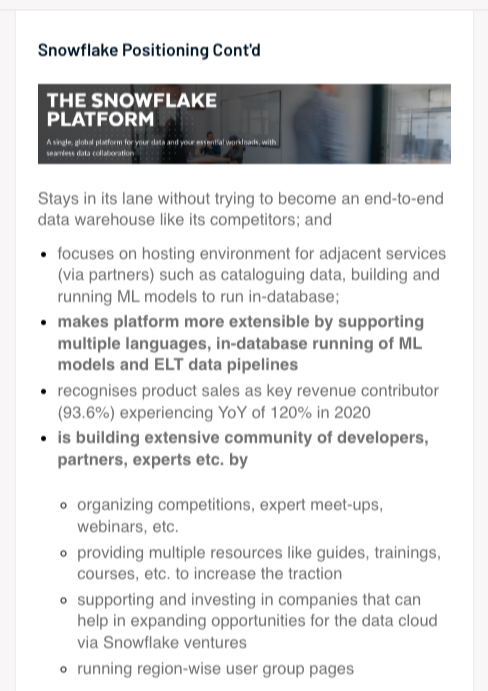

Want more tips and templates for your battlecards? Check out our Competitive Sales Battlecards 101 guide here.
The basic intel needed to build this card can often be found directly on your competitors’ websites. Start with blog posts to understand how they discuss their product and the problem that they are trying to find. Another strategy is to use a website monitoring tool (such as Klue) to track changes on your competitors’ websites over time.
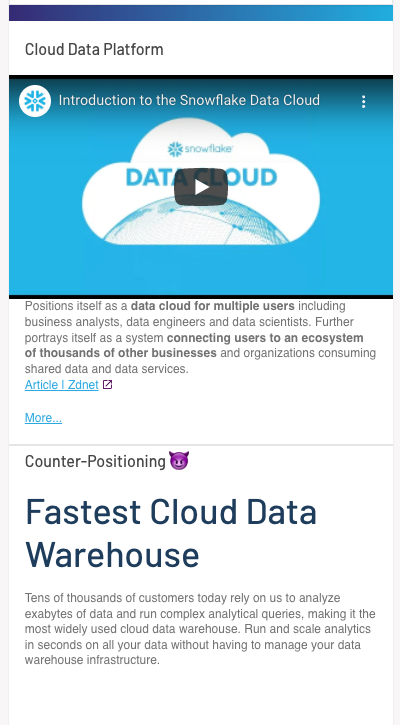

This can help you to see how they change key messages and other copy on their website- giving valuable intel about the evolution of their marketing and positioning strategies.
In some cases, you might be able to find pitch videos or demo webinars online that show how they tie their messaging into their sales pitch. If you can access any of these materials, take note of how your competitor positions others in the market.
Can you gather any clues about how they might deposition your product? If so, you’ll want to include that intel into your battlecard, with insights on how to correctly pivot the conversation back to your strengths.


Trends over time can be hard to find, but are highly valuable in understanding a competitor’s strategic evolution. The act of sourcing and curating this intermittently over time can be a resource-heavy exercise. A competitive intelligence tool like Klue can help with the collection and curation of dynamic intel such as blog posts, paid SEM keywords, and news releases, in addition to monitoring competitor webpages.
This card is part of our Overview Battlecard Template, which is a set of eight of the most commonly used cards we’ve seen across hundreds of battlecards. We’re covering each of these cards one by one in our series Competitive Battlecards 101.
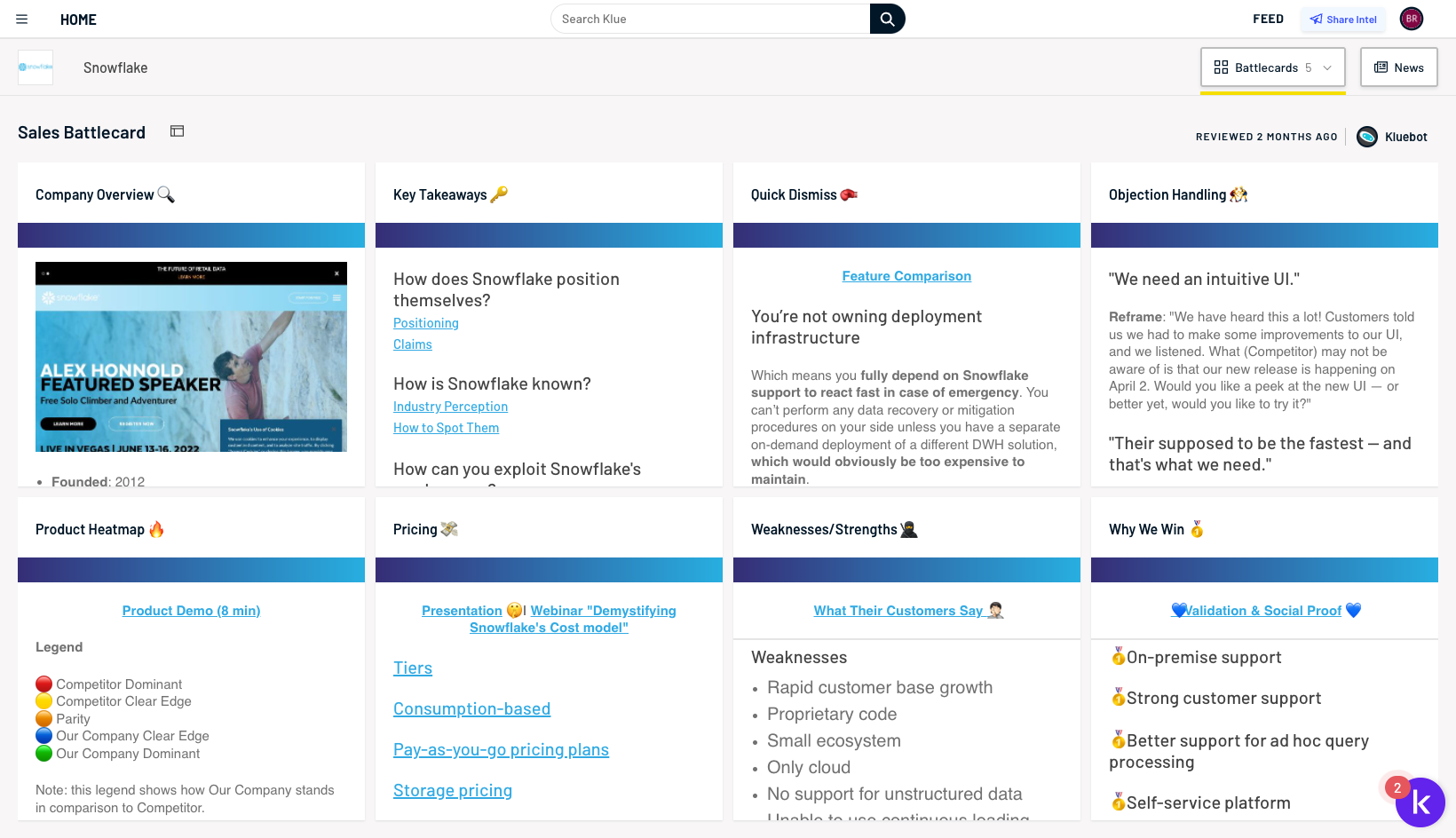

If you’ve come this far and you’re still looking for more on battlecards, download our Competitive Sales Battlecards 101 Ebook.
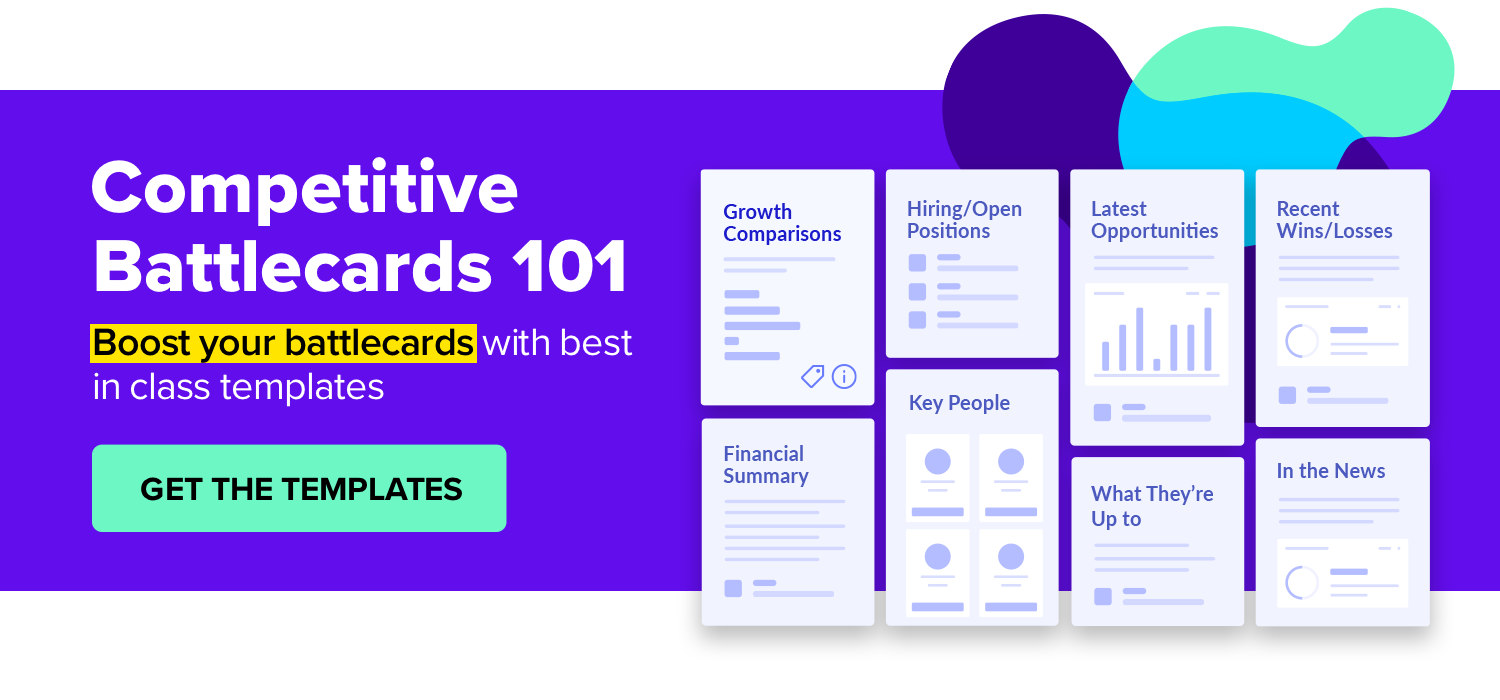



Competitive Enablement
The topic of Large Language Models (LLMs) has a lot of confusion. Here's what you need to know about how Klue is working with them.


Competitive Enablement
Product Marketing
If your competitive intel game is too strong for automation, too pure for data privacy, and too rebellious for accuracy — then Klue AI is probably not for you.
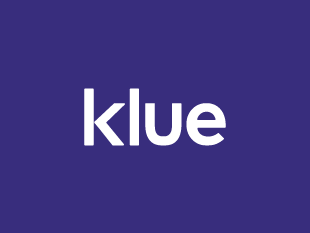

Let’s do it. Tell us a bit about yourself and we’ll set up a time to wow you.
Let's do it. Tell us a bit about yourself and we'll set up a time to wow you.
XLet's do it. Tell us a bit about yourself and we'll set up a time to wow you.
XSubscribe to get our latest AI functionality and news in your inbox.
XOur Buyer Pulse feature, set to launch in Q2 2024, offers valuable insights into the factors influencing buyer decisions in your pipeline. By signing up for the waitlist, we can better gauge interest and proactively engage with you to streamline the setup and integration process before the feature becomes widely available.
X